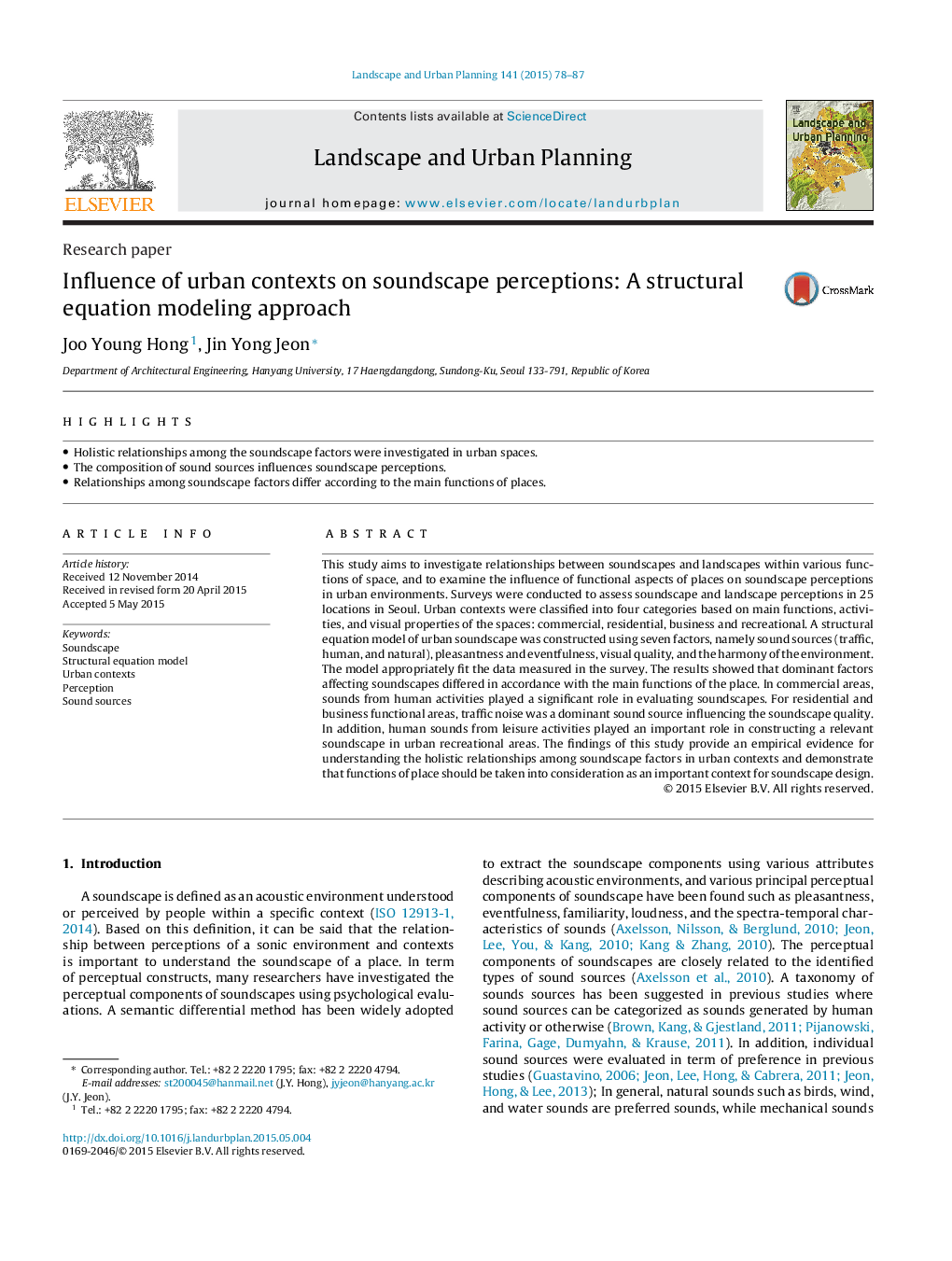| Article ID | Journal | Published Year | Pages | File Type |
|---|---|---|---|---|
| 7461110 | Landscape and Urban Planning | 2015 | 10 Pages |
Abstract
This study aims to investigate relationships between soundscapes and landscapes within various functions of space, and to examine the influence of functional aspects of places on soundscape perceptions in urban environments. Surveys were conducted to assess soundscape and landscape perceptions in 25 locations in Seoul. Urban contexts were classified into four categories based on main functions, activities, and visual properties of the spaces: commercial, residential, business and recreational. A structural equation model of urban soundscape was constructed using seven factors, namely sound sources (traffic, human, and natural), pleasantness and eventfulness, visual quality, and the harmony of the environment. The model appropriately fit the data measured in the survey. The results showed that dominant factors affecting soundscapes differed in accordance with the main functions of the place. In commercial areas, sounds from human activities played a significant role in evaluating soundscapes. For residential and business functional areas, traffic noise was a dominant sound source influencing the soundscape quality. In addition, human sounds from leisure activities played an important role in constructing a relevant soundscape in urban recreational areas. The findings of this study provide an empirical evidence for understanding the holistic relationships among soundscape factors in urban contexts and demonstrate that functions of place should be taken into consideration as an important context for soundscape design.
Related Topics
Life Sciences
Agricultural and Biological Sciences
Ecology, Evolution, Behavior and Systematics
Authors
Joo Young Hong, Jin Yong Jeon,
